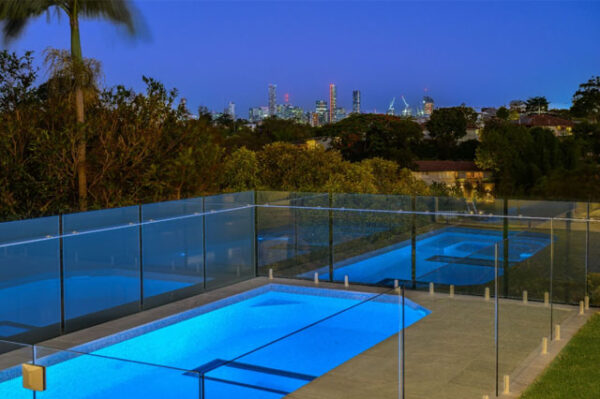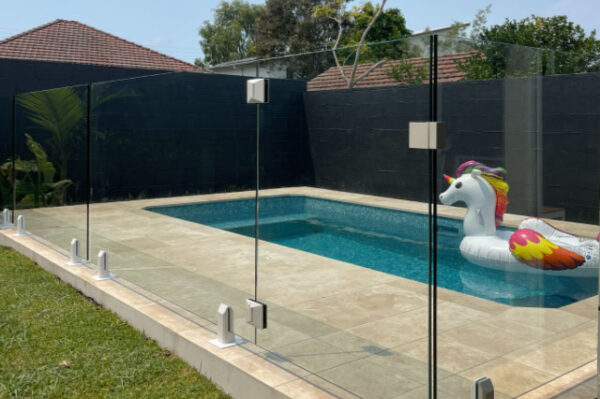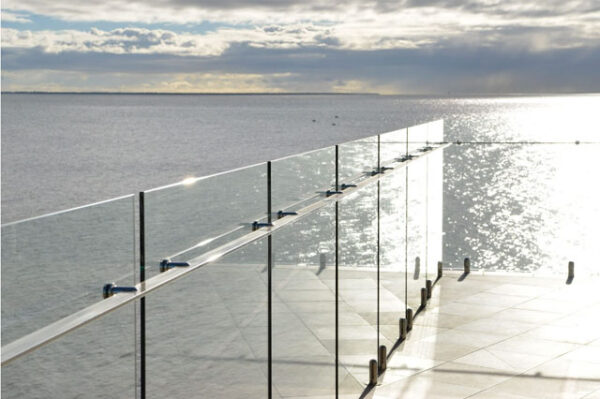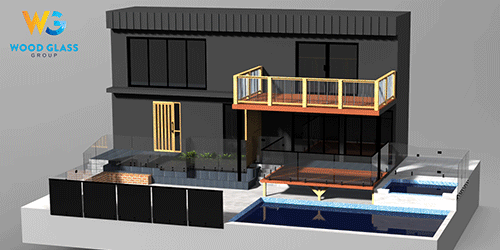Swimming Pool Fencing: A Must-Have for Every Homeowner
Introduction to Swimming Pool Fencing
Owning a swimming pool can be an incredible source of joy and relaxation, especially in Australia’s warm climate. However, before plunging into sunny afternoons by the pool, every homeowner must ensure they have the proper pool safety certificates and measures in place. The foremost consideration is having a secure and compliant pool fence, which is legally mandated in all Australian states and territories.
Pool fences are not just a legal requirement; they serve a critical role in preventing accidents and protecting both children and adults from unexpected mishaps. By clearly delineating the swimming area and creating a barrier against unauthorized access, fences provide peace of mind for those who want to fully enjoy their backyard oasis.
Although the thought of installing a fence may seem daunting, modern options offer a variety of materials and designs that cater to both aesthetic and functional needs. Combining safety, style, and compliance has never been easier, ensuring that homeowners can safeguard their pool area without compromising on looks.
Legal Requirements Across Australia
Australia has one of the strictest sets of regulations regarding pool fencing, and for good reason. These rules are designed to save lives, particularly of young children. The Building Code of Australia (BCA) sets general guidelines for pool regulations, but each state and territory may have specific amendments and additional legislation. Despite minor differences, the overarching requirement remains the same: if you have a pool that can hold more than 300 mm (30 cm) of water, it must be properly fenced.
Pool fences throughout the country generally need to be at least 1200 mm in height, measured from the finished ground level. The fence must not have any gaps greater than 100 mm, and it needs to be designed so children cannot climb it. This typically involves ensuring that there are no climbable objects, such as pot plants or furniture, near the fence boundary.
Another critical element of compliance is the self-closing and self-latching gate. To adhere to the regulations, the pool gate latch must be located at a specified height—generally 1500 mm from the ground or 1400 mm from the top of the highest lower horizontal rail. Homeowners should also be aware that local councils in different regions may conduct inspections, so it’s vital to keep your pool fence in line with the most up-to-date regulations.
The Importance of Child Safety
Many pool-related accidents in Australia involve young children, highlighting the importance of strict safety measures in private swimming pools. Children are curious by nature, and an unfenced or inadequately fenced pool can pose a significant hazard. A compliant fence and proper gate mechanism create a first line of defense, helping prevent kids from wandering into the pool area unsupervised.
Adult supervision is undoubtedly crucial, but even the most vigilant parents can be momentarily distracted. Ensuring the fence is the correct height and that the gate is self-closing and self-latching provides an additional safety net. This structure acts as an ever-watchful guardian, minimizing the risk of accidental drownings or near-drownings.
By prioritizing child safety, homeowners also foster a responsible pool culture that extends beyond just their family. Friends, visiting relatives, and neighbors benefit as well, as they can rest assured that all children entering the property are protected by a robust and compliant pool safety barrier throughout.
Different Pool Fencing Materials
The evolution of pool fencing has resulted in a wide variety of materials available on the market. Each material comes with its own set of advantages in terms of durability, visual appeal, maintenance requirements, and cost. Choosing the right material depends on factors like personal style preferences, climate, and budget.
Glass pool fences have become popular in contemporary Australian homes, as they provide a sleek, modern look without obstructing the view of the pool. They are usually made from toughened safety glass, making them sturdy and resistant to breakage. While they can be more expensive, the aesthetic benefits and minimal maintenance often justify the cost.
Aluminum and steel are also common choices, offering exceptional longevity and strength. These metals come in powder-coated finishes that resist rust and corrosion, making them well-suited to areas exposed to salt or harsh climatic conditions. For homeowners who prefer a more natural look, timber can be a viable option, although it typically requires more maintenance to ensure it remains compliant and structurally sound.
Design Considerations for Aesthetic Appeal
A pool fence doesn’t have to be an eyesore. Many pool fencing options are designed to seamlessly blend in with the property’s landscaping and architecture. For homeowners looking to preserve sightlines to the water, glass panels are a popular choice, as they create a virtually transparent barrier. This transparent quality can make the pool area appear more spacious and open.
For those who prefer a more traditional look, metallic fences with decorative elements can complement heritage or rustic-style homes. Available in various colors and patterns, these fences can match other property features, such as roof trims and fences around the perimeter. Incorporating design elements like vertical rods or elaborate scrollwork can give your pool fence an elegant touch.
Regardless of the chosen material, it’s essential to adhere to the core safety guidelines. While style is crucial for many homeowners, no aesthetic should compromise compliance. The best designs combine functionality, the safety requirements, and visual appeal, ensuring the pool fence stands as both a protective feature and a harmonious extension of the home’s overall aesthetic.
Maintenance of Pool Fences
Maintaining a pool fence is necessary not only for aesthetic reasons but also to ensure ongoing compliance with local regulations. Over time, fences can deteriorate, or ground levels can shift, creating gaps or weak points in the structure. Regular inspections help identify such issues before they lead to more significant problems.
Metal fences typically require minimal upkeep, although the powder coating can wear over time if they’re exposed to harsh elements. Checking for signs of rust or corrosion is crucial, particularly for those living in coastal regions. Glass fences need regular cleaning to remove water spots and smudges, ensuring they remain safe to use and visually appealing.
Timber fences often demand more frequent maintenance, including resealing or repainting to prevent weather damage. Warping or rotting wood not only looks unsightly but can also affect structural integrity. Regardless of the material, always ensure that gate latches, hinges, and any self-closing mechanisms are well-lubricated and functioning correctly.
The Role of Self-Closing and Self-Latching Gates
One of the most crucial aspects of a compliant pool fence is the self-closing and self-latching mechanism on the gate. This feature is so important that it is explicitly spelled out in Australian standards, making it a non-negotiable part of any pool fencing system. The purpose is simple: gates in pools built should automatically close behind someone entering or leaving the pool area.
The self-latching mechanism ensures the gate locks securely once closed, which is essential in preventing children from gaining unmonitored access to the pool. Even if a gate is accidentally left open, the self-closing feature helps minimize this risk. Regular checks to verify the gate is closing correctly are advised, especially after any maintenance work on the fence or gate.
Installing the latch at the correct height is equally important. Australian regulations typically require that latches be placed at least 1500 mm above ground level or 1400 mm from the highest lower rail of the gate. If the latch is positioned too low, it defeats the purpose, as it becomes accessible to curious toddlers who might learn to open it.
Common Mistakes in Pool Fencing
One frequent error is placing climbable objects too close to the fence. Items like potted plants, chairs, tables, or even pool toys can inadvertently create footholds that children may use to scale the barrier. Homeowners sometimes overlook these minor details, yet they can lead to serious safety hazards and possible non-compliance.
Another common oversight involves gate maintenance. A gate that doesn’t self-close and self-latch properly no longer meets the legal standard. Sometimes, heavy pool traffic causes excessive wear on hinges, leading the gate to hang unevenly or fail to latch. Routine checks will help catch these issues early.
Even the fence material itself can be problematic if it doesn’t meet structural requirements. Some homeowners choose decorative or cheaper materials that may not have the necessary strength or durability. Ensuring the chosen fence material is approved for pool barriers is crucial, as non-compliant materials won’t pass inspections and could result in fines.
The Installation Process
Installing a pool fence typically starts with reviewing local regulations and obtaining any required permits. While the process may differ slightly across states and territories, it usually involves submitting plans and designs to local councils or certified inspectors. Once approved, a site survey is conducted to determine the best fence placement.
Professional installers then set out the fence line, ensuring it meets the prescribed height and clearances. The gate is installed with a self-closing and self-latching mechanism, with the latch at the correct height. It’s vital to confirm there are no protrusions or spaces that violate the legal requirements.
Before you can officially start using your new pool fence, an inspection is generally required to verify compliance. Passing this inspection is crucial for legally operating the pool. If the spa pool fence fails, you’ll be given a timeframe to correct any issues. Once it meets all standards, you can enjoy peace of mind knowing your pool area is secure.
Upgrading an Existing Fence
If your property already has a pool fence but you’re unsure of its compliance, consider hiring a professional inspector or consultant to evaluate it. Australian standards are updated periodically, and older fences may not meet new requirements. Even if your fence was compliant when originally installed, changes in legislation or wear-and-tear over the years might have compromised its status.
Upgrading often involves addressing structural weaknesses such as rusted panels, broken latches, or warped timber. Sometimes, homeowners choose to replace sections of an older fence with modern materials like glass or aluminum, thereby enhancing both safety and visual appeal. In many cases, the fence’s gate or latch assembly can be swapped out to meet current self-closing and self-latching regulations without the need for a full replacement.
Beyond the fence itself, you might also consider rearranging landscaping or garden features. Ensuring there are no climbable objects within 900 mm of the fence perimeter helps maintain compliance. Repositioning furniture or large potted plants could be all that’s necessary to avoid an accidental non-compliance.
Costs and Budgeting
When planning the budget for a pool fence, several factors come into play, including materials, installation fees, and potential council approvals or inspection costs. Glass fences are often on the higher end of the price spectrum due to their sleek design and durability. Aluminum and steel are generally more cost-effective while still offering strong protection.
Budgeting also involves future maintenance expenses. Timber fences may require regular repainting or sealing, whereas metal fences may need periodic checks for rust. Glass, while generally easy to clean, can show water spots and may benefit from protective coatings that add to initial expenses.
Homeowners should also set aside funds for any unexpected modifications required to meet compliance, such as re-leveling ground, adding gates, or altering landscaping. It’s wise to compare quotes from multiple installers to get the best value without compromising safety and quality.
DIY vs. Hiring a Professional
The allure of saving money often tempts homeowners to consider installing a pool fence themselves. While do-it-yourself projects can be fulfilling, pool fencing must meet very specific requirements under Australian law. Any mistakes, no matter how small, can result in non-compliance, which could lead to fines or, far worse, an unsafe swimming environment.
Hiring a professional ensures the installation process meets the legal standard from day one. Experts are familiar with the minutiae of state and territory regulations and can quickly spot potential pitfalls. A reputable installer will also organize or guide you through the final inspection, providing you with a certificate of compliance.
That said, if you possess strong DIY skills and a thorough understanding of local regulations, installing your own fence may be feasible. It’s crucial, however, to do diligent research, invest in quality materials, and perhaps even consult with a professional for final checks. The risks of non-compliance and potential safety hazards cannot be overstated, so weigh the pros and cons carefully.
Swimming Pool Fence Inspections
In Australia, many states require pool fences to undergo regular inspections. The frequency of these inspections can vary based on local council requirements, the property’s age, and other factors. Some areas mandate inspections every two to three years, while others might impose checks only upon property sale or lease renewals.
Inspections are typically performed by certified swimming pool safety and inspectors. During the assessment, the inspector will measure the height of the fence, check the gaps, verify the self-closing gate functionality, and examine the latch location. They will also look for climbable objects near the fence, as these can invalidate compliance.
Failing an inspection isn’t necessarily disastrous, but it does require prompt action to address any cited issues. Most local councils grant a specified timeframe to fix the problems, after which a reinspection is scheduled. Keeping up with any recommended maintenance or upgrades helps ensure a hassle-free experience and continued legal compliance.
Sometimes, homeowners also need to display a resuscitation sign in or near the pool area, depending on the state or territory. Inspectors will check for this sign as part of the compliance process. Ensuring it’s visible and in good condition can be a simple but essential requirement to pass your inspection.
Consequences of Non-Compliance
Australia’s stringent pool fencing laws carry substantial penalties for non-compliance. Beyond the immediate risk of an unsafe environment, homeowners who fail to meet requirements can face fines that vary by state. Councils generally issue notices first, providing a window for corrective action. If these issues are left unaddressed, the consequences can escalate.
Should a serious accident occur in a non-compliant pool area, legal ramifications might be severe. Insurance claims can be challenged if a homeowner was negligent in maintaining a compliant fence. The emotional toll of an accident is immeasurable, and the legal and financial fallout can add even more stress to an already traumatic situation.
Keeping the fence in line with current regulations not only avoids fines but also protects homeowners from potential lawsuits. By investing in a compliant fence and regular maintenance, you’re safeguarding your family, your finances, and your peace of mind. The law is designed to protect everyone involved, ensuring Australian backyards are as safe as possible.
Additional Safety Measures
A compliant pool fence is a significant step toward a safer backyard, but there are other measures homeowners can adopt to further enhance security. Pool covers and alarms, for instance, act as additional layers of protection. A properly fitted pool cover can prevent accidental falls, while an alarm system can alert you if someone enters the backyard swimming pool or area unexpectedly.
Resuscitation charts displayed prominently near the pool are another essential requirement in many parts of Australia. These signs provide crucial first-aid instructions in case of emergencies, serving as a quick reference for adults who may need to administer CPR or call for professional help.
Landscaping choices also play a crucial role in safety. For instance, selecting plants with minimal foliage around the fence can remove climbable footholds. Additionally, avoid placing large rocks or ornaments that could act as stepping stones. A well-planned garden layout can subtly enhance security without feeling invasive or cluttered.
Ongoing Education for Pool Owners
Beyond the physical measures, pool owners should prioritize ongoing education about water safety. Regularly refreshing first-aid knowledge and CPR skills can make a life-saving difference in an emergency. Many local councils and community centers offer water safety programs, which can be beneficial for both adults and children.
Attending workshops or seminars organized by local authorities can also help homeowners stay updated on any regulatory changes. Regulations may evolve over time in response to new safety data or technological advancements in pool fencing regulations and materials. Keeping informed helps prevent accidental non-compliance and fosters a responsible pool-owning culture.
Sharing knowledge with visitors, especially those with children, is equally important. Encourage guests to understand and respect the safety guidelines around your pool. Simple steps like pointing out the gate’s self-closing feature or demonstrating how the latch works can go a long way in preventing accidents.
Integrating Technology in Pool Safety
Technological advancements have made modern pool safety more efficient than ever. Smart latches equipped with sensors can send alerts to your smartphone if the gate is left open. Some systems can even be integrated into home automation setups, allowing you to monitor your pool area in real-time through cameras or motion detectors.
Automated pool cleaners, while not directly tied to fencing, also help maintain a hygienic swimming environment. A cleaner pool is often more visually appealing, which encourages consistent supervision. Additionally, specialized sensors can monitor water levels, ensuring that the pool does not become dangerously full or too shallow.
Despite these technological aids, no gadget can replace the fundamental need for a robust, compliant fence. Technology should complement, not replace, the physical barriers and vigilant oversight that every pool owner must provide. When used wisely, these modern tools create a layered approach to safety, giving you greater confidence in your pool environment.
Choosing the Right Contractor
If you decide to hire a professional installer, due diligence is vital in selecting the right contractor. Look for installers who specialize in pool fencing and have proven experience within your state or territory. Their familiarity with local council regulations and inspection processes is invaluable in ensuring a stress-free installation.
Ask for references or check online reviews to gauge customer satisfaction. Some installers may offer warranties on both the materials and their workmanship, providing added peace of mind. Obtain a detailed quote that itemizes costs, including any extras for permits or additional hardware, so you’re fully informed.
A reputable contractor will also walk you through the inspection procedure and any follow-up services. This guidance can be critical in understanding how to maintain compliance over the years. With the right professional by your side, you minimize errors and expedite your journey to enjoying a safe, legal pool area.
Concluding Remarks: Peace of Mind for Homeowners
Swimming pool fencing is a must-have for every Australian homeowner looking to combine leisure with responsibility. Far from being a mere legal obligation, a properly installed, well-maintained outdoor pool fence ensures that everyone—from energetic toddlers to visiting friends—can enjoy the water with minimized risks.
Investing in a compliant fence is an investment in peace of mind. By adhering to Australian regulations, choosing high-quality materials, and committing to regular upkeep, you’re not only protecting your loved ones but also preserving the value and appeal of your property. The knowledge that your boundary fences your pool area meets all legal and safety standards allows you to relax and enjoy your backyard oasis without constant worry.
Ultimately, a pool fence underscores a homeowner’s commitment to safety, community responsibility, and family well-being. It stands as an essential feature that adds both security and style to any swimming area. By staying informed, proactive, and diligent, you’ll ensure that your pool is a source of pleasure rather than concern, creating a haven of fun that remains safe for everyone involved.
Frequently Asked Questions
FAQ 1
Q: How high does my pool fence need to be in Australia?
A: Generally, pool fences must be at least 1200 mm high. However, regulations can vary by state or territory, so always confirm with your local council or a certified pool inspector.
FAQ 2
Q: Do I need a self-closing gate for my pool fence?
A: Yes. Australian standards mandate a self-closing, self-latching gate to ensure it automatically locks after each use, preventing children from entering the pool area unsupervised.
FAQ 3
Q: What are the consequences if my pool fence doesn’t meet Australian regulations?
A: Non-compliance can result in fines and legal consequences, especially if an accident occurs. You’ll typically receive a notice to fix any issues, and repeated non-compliance can lead to more severe penalties.
FAQ 4
Q: Can I install a pool fence myself?
A: DIY is allowed, but it’s crucial to follow the exact regulations for height, gate latches, and material strength. Many homeowners prefer hiring professionals who are well-versed in local codes and can ensure a hassle-free, compliant installation.
FAQ 5
Q: How often should I have my own swimming pool barrier fence inspected?
A: Inspection frequency varies by location. Some areas require an inspection every few years; others only mandate checks upon property sale or lease. Refer to your state or territory guidelines and perform regular self-checks to maintain compliance.




